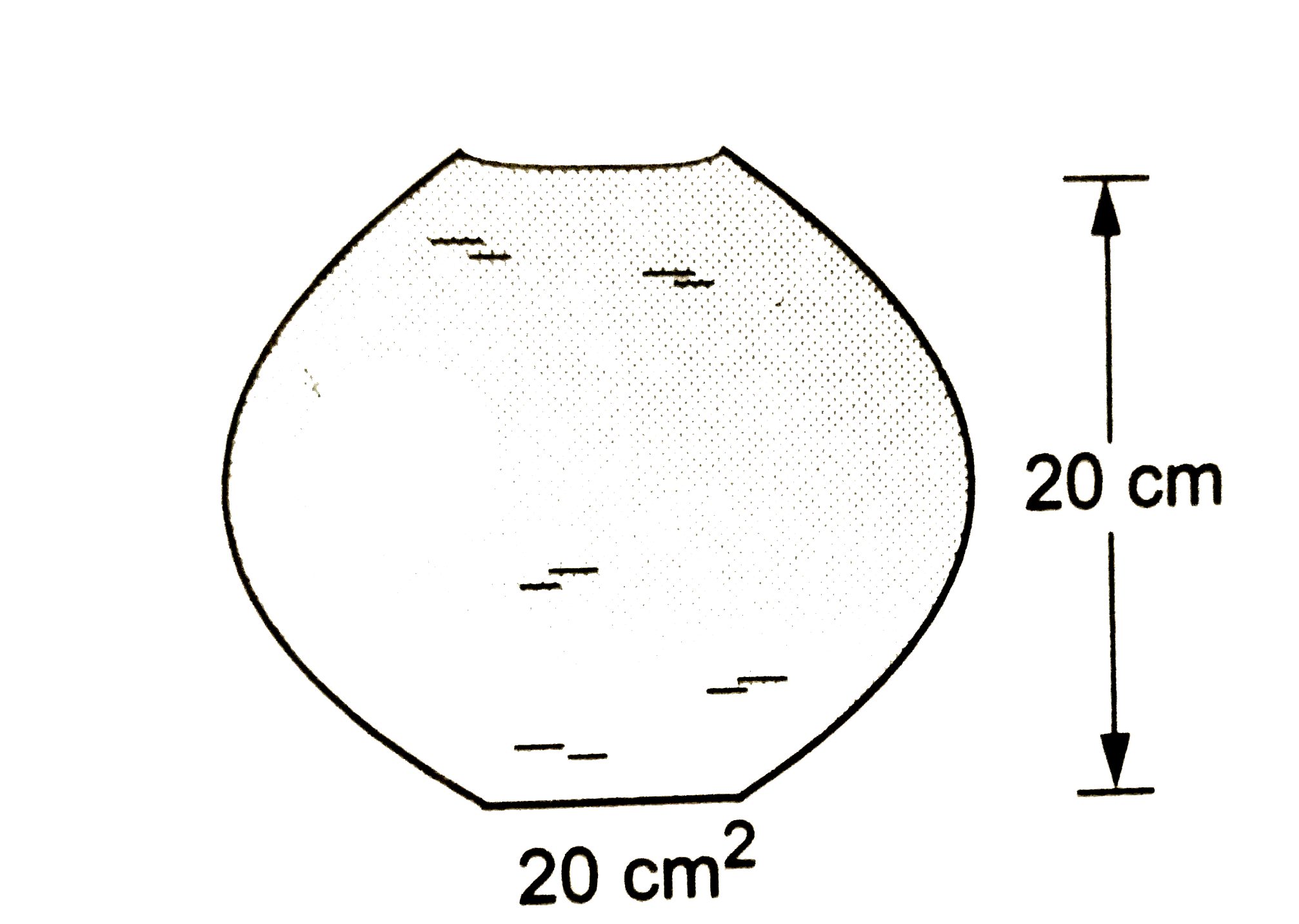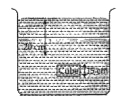Water is filled in a flask upto a height of 20cm. The bottom of the flask is circular with radius 10cm. If the atmospheric pressure is 1.013×105 Pa, find the force exerted by the water on the bottom . Take g=10ms−2 and density of water =1000kgm−3.
The correct Answer is:(3246N)
Step by step video, text & image solution for Water is filled in a flask upto a height of 20cm. The bottom of the flask is circular with radius 10 cm. If the atmospheric pressure is 1.013xx10^(5) Pa, find the force exerted by the water on the bottom . Take g=10 "ms"^(-2) and density of water =1000 "kgm"^(-3). by Physics experts to help you in doubts & scoring excellent marks in Class 11 exams.
Updated on:21/07/2023Similar Questions
वृताकार अनुप्रस्थ परिच्छेद वाले एक बीकर की त्रिज्या 4 cm है तथा इसे पारे से 10 cm ऊंचाई तक भरा गया है | बीकर की पेंदी पर पारे के कारण लगते बल का मान निकालें | वायुमंडलीय दाब =105Nm−2, पारे का घनत्व 13600 kg m^(-3)" तथा "g=10 ms^(-2).
View Solutionपानी से भरे एक बरतन की पेंदी का क्षेत्रफल 20cm2, इसके ऊपर के भाग का क्षेत्रफल 20cm2, ऊँचाई 20 cm तथा आयतन आधा लीटर है (चित्र 24.E3) | निकालें,

(a) बरतन की पेंदी पर पानी द्वारा लगाया गया बल
(b) बरतन की दीवारों द्वारा पानी पर लगाया गया परिणामी बल | वायुमंडलीय दाब =1.0×105N/m2, पानी का घनत्व =1000kg/m3 तथा g=10m/s2. सभी संख्याओं के बिलकुल सही माने |
View SolutionA conical flask is full of water. The flask has base radius 10 units and height 6 units, the water poured into a cylindrical flask of base radius 5 units. Find the height of water in the cylindrical flask.
View SolutionA beaker of circular cross-section of radius 4 cm is filled with mercury up to a height of 10 cm. Find the force exerted by the mercury on the bottom of the beaker. The atmospheric pressure =105Nm−2. Density of mercury =13600kgm−3.Takeg10ms−2
View SolutionA glass full of water upto a height of 10 cm has a bottom of are 10 cm^(2) , top of area 30cm^(2) and volume 1 litre. (a) Find the force exerted by the water on the bottom. (b) Find the resultant force exerted by the sides of the glass on the water. (c ) If the glass is convered by a jar and the air inside the jar is completely pumped out, what will be the answer to parts (a) and (b). (d) If a glass of different shape is used, provided the height, the bottom area, the top area and the volume are unchanged, will the answer to parts (a) and (b) change. Take g=10m//s^(3) , density of water =10^(3) kg//m^(3) and atmospheric pressure =1.01xx10^(5)N//m^(2) .
View SolutionFind the pressure exerted below a column of water, open to the atmosphere, at depth (i) 10 m " " (ii) 30 m (Given, density of water =1xx10^(3)kgm^(-3), g =10 ms^(-2))
View SolutionA hole is made at the bottom of the tank filled with water (density =1000 kgm^(-3)) . If the total pressure at the bottom of the tank is three atmospheres (1 atmosphere =10^(5) Nm^(-2)) , then the velocity of efflux is nearest to
View SolutionIn the below figure shows a cube of each side 15 cm immersed in a tub containing water of density 103kgm−3 such that its top surface in 20 cm below the free surface of water. Calculate the pressure at the bottom of cube
Take atmosphere pressure = 105 Pa and g=9.8ms−2

View Solution

